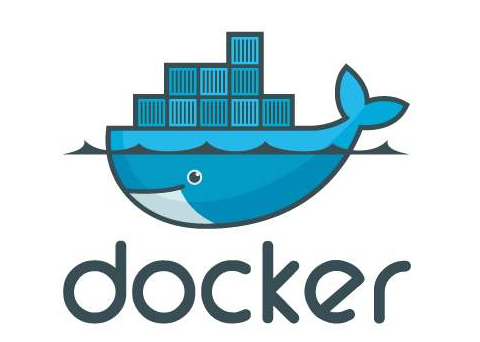您现在的位置是: 网站首页 >Python >Python常用模块 Python
Python模块---subprocess系统指令交互
 admin2018年12月25日 11:43
【Python
】
1702人已围观
admin2018年12月25日 11:43
【Python
】
1702人已围观
Python常用模块简介 Python常用模块使用方法
# subprocess系统指令交互 `subprocess`通过子进程来执行外部指令,并通过`input/output/error`管道,获取子进程的执行的返回信息。其他类似的如`os.system`、`os.spawn*`、`os.popen*`、`commands.*`等 导入模块 ```python import subprocess ``` ## subprocess.call() 执行命令,并返回执行状态,其中shell参数为`False`时,命令需要通过列表的方式传入,当shell为`True`时,可直接传入命令,执行成功返回0,失败返回1 ```bash root@StarMeow-Svr:~# df -hT Filesystem Type Size Used Avail Use% Mounted on udev devtmpfs 424M 0 424M 0% /dev tmpfs tmpfs 87M 2.2M 85M 3% /run /dev/vda1 ext3 50G 7.5G 40G 17% / ``` ```python >>> a = subprocess.call(['df','-hT'],shell=False) Filesystem Type Size Used Avail Use% Mounted on udev devtmpfs 424M 0 424M 0% /dev tmpfs tmpfs 87M 2.2M 85M 3% /run /dev/vda1 ext3 50G 7.5G 40G 17% / >>> a 0 >>> a = subprocess.call('df -hT',shell=True) Filesystem Type Size Used Avail Use% Mounted on udev devtmpfs 424M 0 424M 0% /dev tmpfs tmpfs 87M 2.2M 85M 3% /run /dev/vda1 ext3 50G 7.5G 40G 17% / >>> a 0 >>> a = subprocess.call('test',shell=True) >>> a 1 ``` ## subprocess.check_call() 用法与`subprocess.call()`类似,区别是,当返回值不为0时,直接抛出异常 ```python >>> a = subprocess.check_call('df -hT',shell=True) Filesystem Type Size Used Avail Use% Mounted on udev devtmpfs 424M 0 424M 0% /dev tmpfs tmpfs 87M 2.2M 85M 3% /run /dev/vda1 ext3 50G 7.5G 40G 17% / >>> a 0 >>> a = subprocess.check_call('test',shell=True) Traceback (most recent call last): File "<stdin>", line 1, in <module> File "/root/.pyenv/versions/3.6.6/lib/python3.6/subprocess.py", line 291, in check_call raise CalledProcessError(retcode, cmd) subprocess.CalledProcessError: Command 'test' returned non-zero exit status 1. ``` ## subprocess.check_output() 用法与上面两个方法类似,区别是,如果当返回值为0时,直接返回输出结果,如果返回值不为0,直接抛出异常。该方法在python3.x中才有。 ```python >>> a = subprocess.check_output('test',shell=True) Traceback (most recent call last): File "<stdin>", line 1, in <module> File "/root/.pyenv/versions/3.6.6/lib/python3.6/subprocess.py", line 336, in check_output **kwargs).stdout File "/root/.pyenv/versions/3.6.6/lib/python3.6/subprocess.py", line 418, in run output=stdout, stderr=stderr) subprocess.CalledProcessError: Command 'test' returned non-zero exit status 1. >>> a = subprocess.check_output('pwd',shell=True) >>> a b'/root\n' ``` ## subprocess.Popen() - 将一个进程的执行输出作为另一个进程的输入 - 先进入到某个输入环境,然后再执行一系列的指令 有以下参数: - `args`:shell命令,可以是字符串,或者序列类型,如`list`,`tuple`。 - `bufsize`:缓冲区大小,可不用关心 - `stdin,stdout,stderr`:分别表示程序的标准输入,标准输出及标准错误 - `shell`:与上面方法中用法相同 - `cwd`:用于设置子进程的当前目录 - `env`:用于指定子进程的环境变量。如果`env=None`,则默认从父进程继承环境变量 - `universal_newlines`:不同系统的的换行符不同,当该参数设定为`true`时,则表示使用`\n`作为换行符 在`/root`下创建一个test的目录,然后删除该目录: ```python >>> a = subprocess.Popen('ls',shell=True,cwd='/root') >>> coolq-data django-web DockerCoolQ.sh software-download >>> a <subprocess.Popen object at 0x7f0741afba58> >>> subprocess.Popen('mkdir test', shell=True, cwd='/root') <subprocess.Popen object at 0x7f0741afbb00> >>> subprocess.Popen('ls',shell=True, cwd='/root') <subprocess.Popen object at 0x7f0741afb9e8> >>> coolq-data django-web DockerCoolQ.sh software-download test >>> subprocess.Popen('rm -rf test', shell=True, cwd='/root') <subprocess.Popen object at 0x7f0741afb940> >>> subprocess.Popen('ls',shell=True, cwd='/root') <subprocess.Popen object at 0x7f0741afb9e8> >>> coolq-data django-web DockerCoolQ.sh software-download ``` 将一个子进程的输出,作为另一个子进程的输入: ```python import subprocess child1 = subprocess.Popen(["cat","/etc/passwd"], stdout=subprocess.PIPE) child2 = subprocess.Popen(["grep","0:0"],stdin=child1.stdout, stdout=subprocess.PIPE) out = child2.communicate() ``` 执行shell脚本,获取脚本中输出的内容 ```python try: sub = subprocess.Popen("/root/django-web/AutoUwsgi.sh", shell=True, stdout=subprocess.PIPE, cwd="/root/django-web/") text = sub.stdout.read().decode('utf8') print(text) except NotADirectoryError as e: print(e) ``` http://www.cnblogs.com/breezey/p/6673901.html
很赞哦! (0)
相关文章
文章交流
- emoji











 GitHub
GitHub
 QQ
QQ
 StarMeow
StarMeow